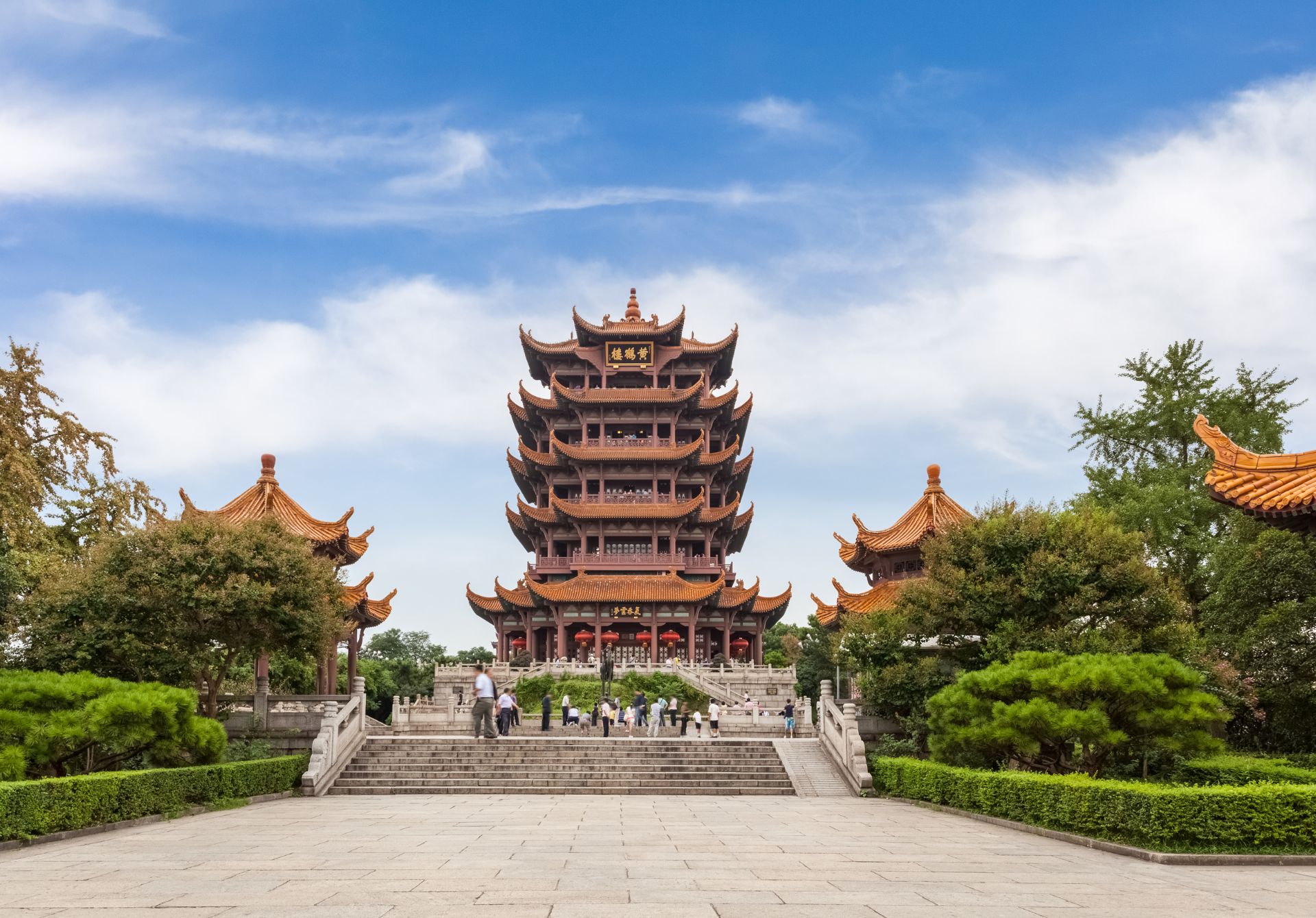Perched majestically atop Snake Hill overlooking the mighty Yangtze River, Yellow Crane Tower (黄鹤楼, Huánghè Lóu) stands as one of China’s most renowned landmarks and a must-visit destination in Wuhan. With a history spanning over 1,800 years, this architectural marvel combines stunning aesthetics with rich cultural significance, making it an essential stop for any traveler in Central China.
Historical Significance and Evolution
Originally built in 223 AD during the Three Kingdoms period, Yellow Crane Tower has been destroyed and rebuilt numerous times throughout history. The current structure, completed in 1985, perfectly recreates the Qing Dynasty design from 1868. While not the original building, it masterfully captures the essence of ancient Chinese architecture and has become one of the “Four Great Towers of China.”
- First constructed as a military watchtower during the Three Kingdoms period
- Transformed into a cultural center during the Tang Dynasty
- Visited by countless renowned poets, including Li Bai and Cui Hao
- Rebuilt 12 times throughout history
- Current structure stands 51.4 meters (168 feet) tall
Architectural Magnificence
The modern Yellow Crane Tower exemplifies classical Chinese architecture with contemporary engineering excellence. The five-story structure features upturned eaves, intricate decorations, and brilliant yellow glazed tiles that gleam in the sunlight. Each level offers increasingly spectacular views of the Yangtze River and Wuhan’s skyline.
- Built using modern materials while maintaining traditional architectural styles
- Features 100,000 yellow glazed tiles
- Incorporates ancient Chinese design elements like dougong brackets
- Surrounded by a 70,000-square-meter park with traditional gardens
Cultural Significance and Legends
The tower’s cultural importance cannot be overstated. It has inspired countless poems, paintings, and legends throughout Chinese history. The most famous legend tells of a wine seller who hosted an immortal disguised as a poor man. In gratitude, the immortal painted a crane on the wall that would come to life and dance whenever the wine seller clapped. This tale gave the tower its iconic name.
Visitor Experience and Practical Information
Today’s Yellow Crane Tower offers visitors a comprehensive cultural experience:
- Opening hours: 7:30 AM to 5:30 PM daily
- Entrance fee: ¥80 (approximately $12 USD)
- Best visiting times: March to May and September to November
- Average visit duration: 2-3 hours
- Guided tours available in multiple languages
Must-See Features
- The Bell and Drum Tower on the ground floor
- Ancient poetry exhibition halls
- Traditional Chinese musical performances (scheduled daily)
- Observation deck on the top floor offering panoramic views
- Garden of Poetic Verses featuring famous poems about the tower
Tips for Visitors
To make the most of your visit to Yellow Crane Tower:
- Visit early morning or late afternoon to avoid crowds
- Plan your visit around sunset for spectacular photography opportunities
- Take advantage of the free guided tours offered at regular intervals
- Consider combining your visit with nearby attractions like East Lake
- Download the official Yellow Crane Tower app for interactive experiences
Conclusion
Yellow Crane Tower represents more than just a historic landmark; it’s a living testament to Chinese culture, architecture, and artistic inspiration. Whether you’re a history enthusiast, architecture lover, or simply seeking to understand Chinese culture better, this iconic structure offers an unforgettable experience. Its perfect blend of ancient charm and modern amenities makes it not just a tourist attraction, but a journey through time that connects visitors with over 1,800 years of Chinese history and culture.
As Wuhan continues to evolve as a modern metropolis, Yellow Crane Tower stands as a proud reminder of the city’s rich heritage, offering visitors a unique opportunity to experience the magnificence of classical Chinese architecture while enjoying modern amenities and spectacular views. For anyone visiting Wuhan, this architectural marvel is not just a recommendation – it’s an essential experience that will leave you with lasting memories and a deeper appreciation for Chinese culture.

